
From the Week of June 26, 2023
The one-stop-shop for everything you need to know about what’s happening this week in your fields.
This week’s featured agronomists are:
Austin Schultz – Le Center
Todd Anderson – Goodhue
Joe Dee – Morristown
Steve Yoch – Elgin
Eric Soley – Ellsworth
Scroll down to hear from your local agronomist, and click for contact info!
WEST
Belle Plaine – Le Center – Le Sueur

Austin Schultz
In the west territory of Ag Partners, we have finished up spraying the rest of the late planted corn and have moved on to post soybeans. We have been able to spray everyday in this area, with the lack of rain and wind throughout the last few weeks. Hopefully we can change that going in to the next week here, as we are starting to see more and more drought related stresses showing up. A common theme many agronomists have been noticing this year is herbicide carryover from previous years in both corn and soybeans. With not receiving much moisture last year to help breakdown the herbicides in the soil, we are seeing the impact in areas with pH’s that are either high or low, and areas of poor drainage. Below are some pictures of some HPPD carryover in soybeans; it amazes me the lack of root growth in spots that are affected and the kind of stress it puts on the plant. I wouldn’t recommend changing your herbicide program, as this is very rare and hasn’t been seen for a long time in the Le Center area. If you have any questions or concerns on your farm, please reach out to your local agronomist so they can help you identify what is going on.
 |
 |
 |
EAST
Pine Island – Cannon Falls – Goodhue – Lake City
Mother nature sure has been stingy with the rains this year. There is a huge amount of variability in the rainfall timing and amounts. Within a 10 min drive you can see crops that look pretty good, all the way to corn wrapped up and struggling. Where guys have received rain, crops have finally taken off and stretched out a little now and are looking pretty good. We are currently in the midst of spraying Enlist/Rup/Dual on the Soybeans. With some questionable soybean stands that were on the verge of re-plant, there is something that we can do to help stimulate some more nodal growth so we can add more pods, resulting in more soybean yield. Foliar applied Ascend SL can help stimulate more growth whether it’s now or when we apply the Fungicide. It won’t reverse what’s already been done, but it will help increase more flowers, increase trifoliate size, and pod retention. For the cost of 1/2bu of soybeans, Answer plot data shows we can expect about a 2.5-5bu response. Ask your local Ag Partners agronomist about adding this into your tank mix. Below is several years of AYS trials on soybean foliar applied Ascend.

CENTRAL
Morristown – Wanamingo – Kenyon

Joe Dee
We received some much needed rain this last weekend with some areas faring better than others, with anywhere from ¼” to 4” received. With that, it means we can always find somewhere to go spraying! Even in areas with little rain, the crop is progressing quickly. First week of May planted corn is anywhere from 3-6 leaves from tasseling depending on planting date and maturity. That is roughly 12 days to 3 weeks before we start seeing tassels poke through! Take some time after the 4th of July to scout corn fields to assess fungicide timing and communicate your needs. Get ahead and plan for success. There is still plenty of potential in this crop, and fungicide is one way to protect your investment and enhance yield.
On another note, first pass post-soybean herbicide applications are nearly complete. Soybeans are really starting to show their flowers this week and take off after a nice drink of rain– after what seems like weeks of sitting idle! Be out scouting some of those problem child fields to assess herbicide performance, especially waterhemp control.
Visit with your Ag Partners agronomist about scouting corn for tassel fungicide application timings!
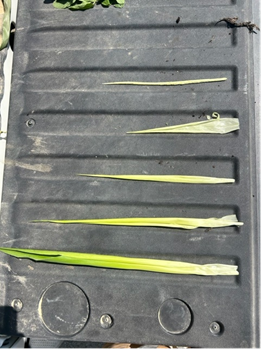 |
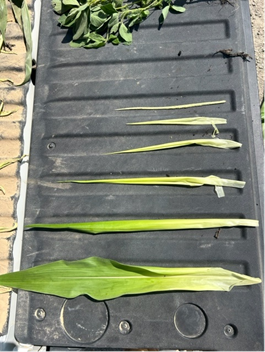 |
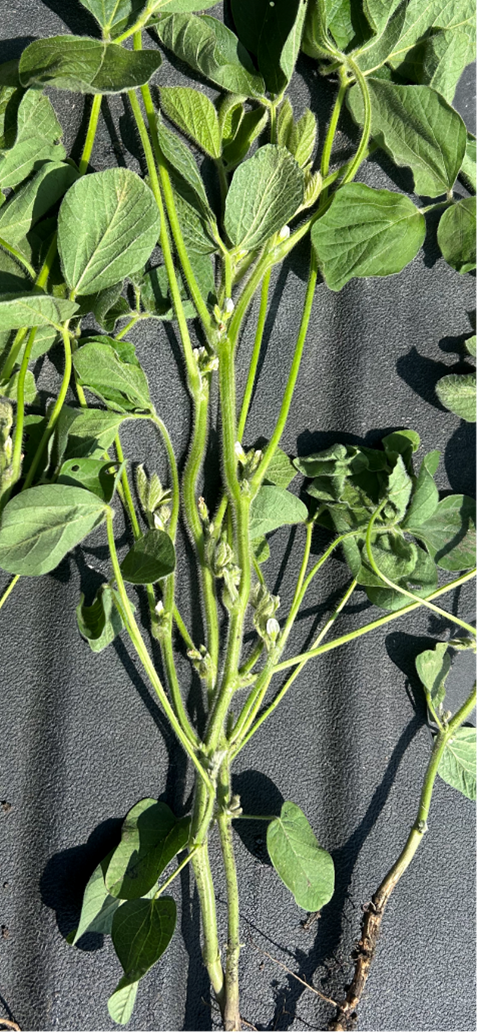 |
SOUTH
Elgin – Lewiston – Stewartville
 Steve Yoch
Steve Yoch
Potassium (K) deficiency in corn has been prevalent in our area this year. Some farms have not seen any rain greater than .05” since May 15th, and that is the main factor in why we are seeing this in numerous fields. Uptake of K is very limited with dry soils. Dry soils along with any compacted areas of the soil that may impede root development, coupled with low potassium soil test levels, and the probability of K deficiency symptoms greatly increases.
Most of the K deficiency did not show up until V6 (where K uptake greatly increases), along with soils that were continuing to dry out, is when symptoms started to show.
When it does eventually rain and if there is adequate potassium soil tests levels, the symptoms on newer leaves will cease and normal growth can resume. However, these fields need to be monitored late in the season for stalk integrity as potassium is a key component in maintaining stalk quality and health.
Another factor attributing to more K deficient issues this year is that for the most part potassium rates that are being spread have been decreasing the past few years. As you visit with your Ag Partners Agronomist to prepare for fall fertilizer needs, make sure you are current on soil samples and apply what potash is needed to not only maintain current soil test levels but also build back some of the potassium in the soil that we have been borrowing from the past few years.
 |
 |
WISCONSIN
Ellsworth
 Eric Soley
Eric Soley
This past Saturday brought some much-needed rain to western Wisconsin! Rain totals varied across our territory with some of our driest areas, unfortunately, only catching a tenth or two. As much of a blessing as that rain was, we will need more soon before the crops start to show their stress again. It’s been a bizarre spring/summer here in Wisconsin and it’s not even July yet! We went from too wet in spring and planting in less-than-ideal conditions in order to beat the next rain, to wondering if it would ever rain again. With the last couple rain events, we have areas in corn and bean fields where seed sat in the ground for two to three weeks before it finally caught enough moisture to germinate. The variation of emergence dates in these fields should make for an interesting fall. One thing that has been consistent this summer is the difficult challenge of dealing with waterhemp. The drought conditions never slowed its emergence or persistence, and as we waited for rain to activate our Group 15 herbicides the waterhemp just kept on coming. The number of surviving waterhemp plants that I see following post applications is alarming. What was once a” spray them before they are 4 inches tall” theory is quickly becoming don’t let them get over 2 inches tall if you want to have a chance to kill them.
Left: late emerging corn
Right: waterhemp plant that survived a post application of dicamba
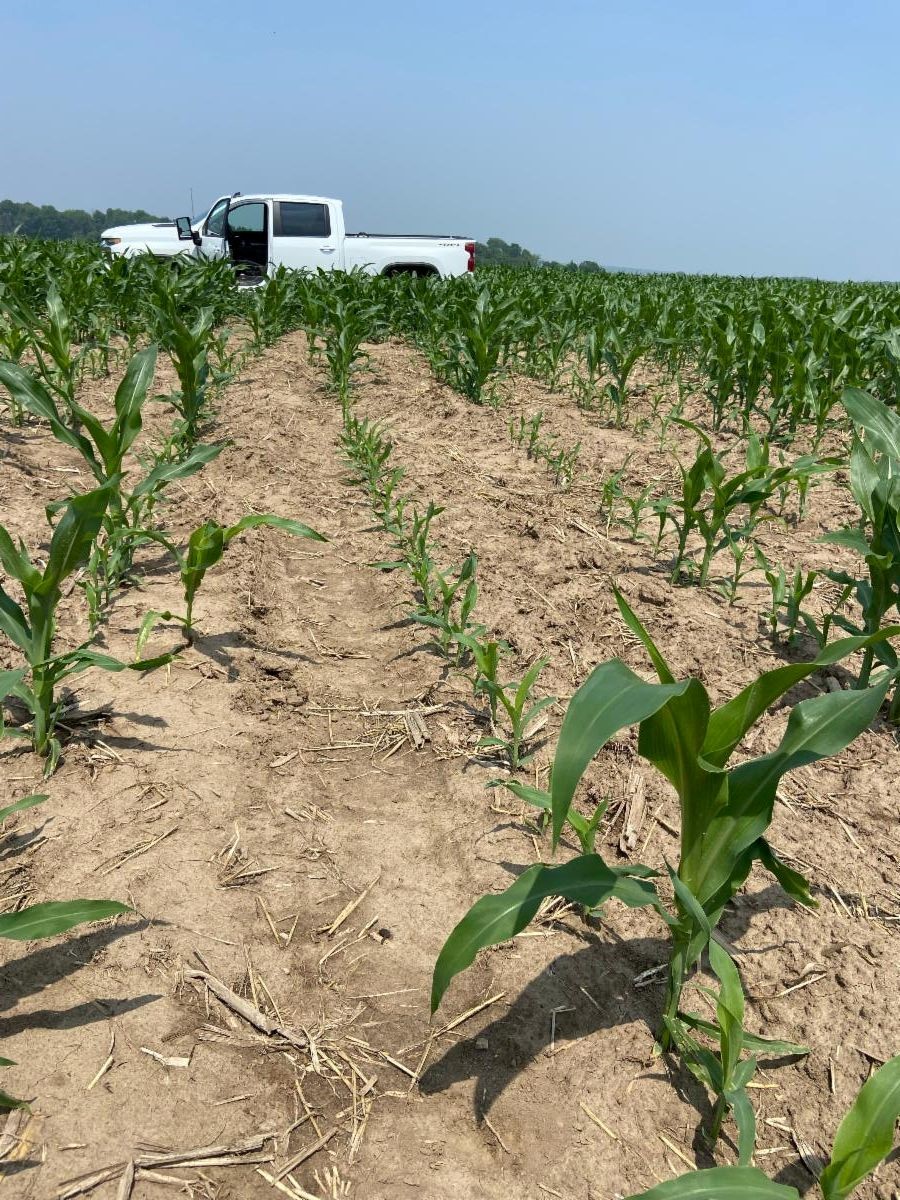 |
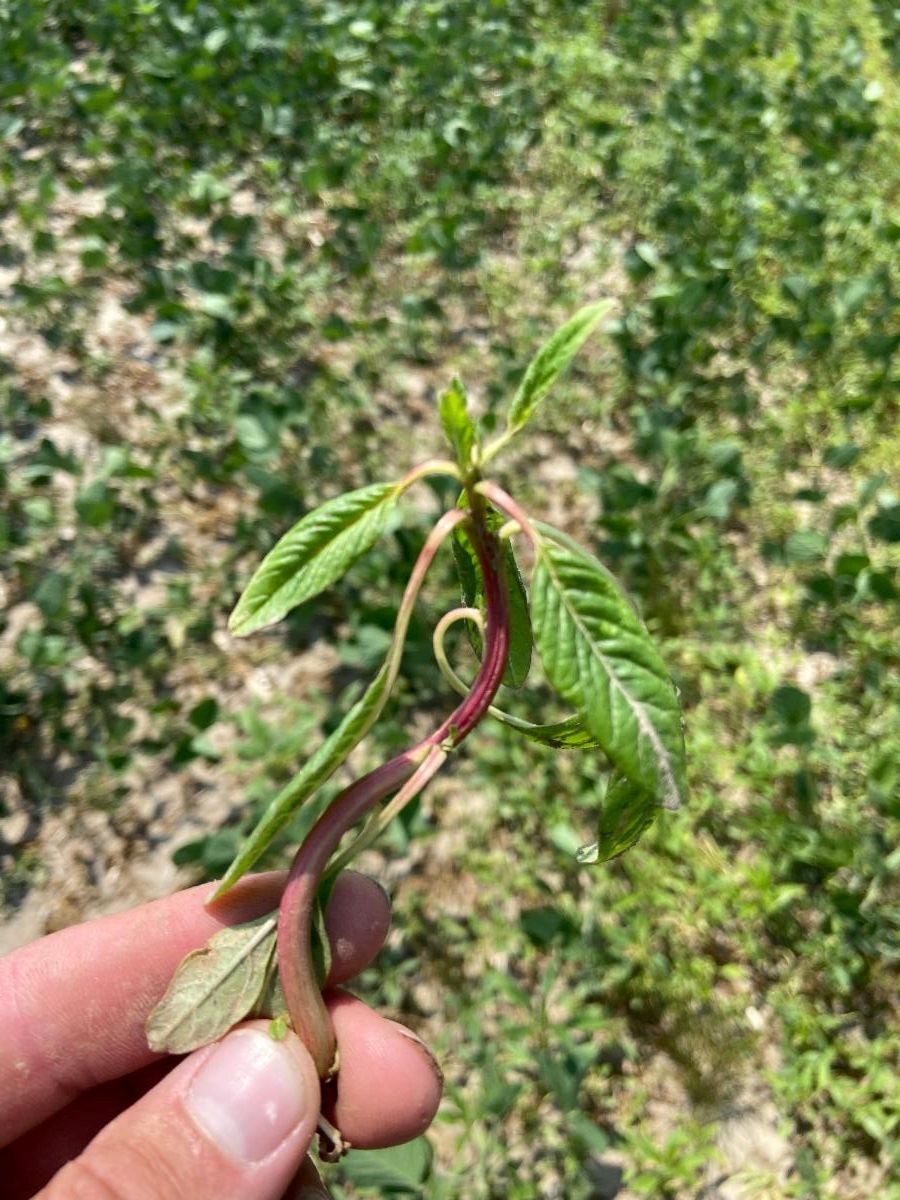 |



